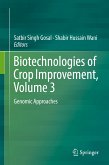The book firstly addresses the question of what is allelopathy. It then examines the major episodes in the history of allelopathy leading to the current era. The work draws extensively on original sources, and consequently many of the assertions published in relation to the background of allelopathy are shown to be incorrect, or at best very inadequate. There is a great deal of information presented in a consolidated and accessible form for the first time. The book endeavours to set the history of allelopathy within both a scientific and sociological context, and it offers a unique insight into the historical factors which have swayed the popularity of allelopathy through the ages.
Dieser Download kann aus rechtlichen Gründen nur mit Rechnungsadresse in A, B, BG, CY, CZ, D, DK, EW, E, FIN, F, GR, HR, H, IRL, I, LT, L, LR, M, NL, PL, P, R, S, SLO, SK ausgeliefert werden.









